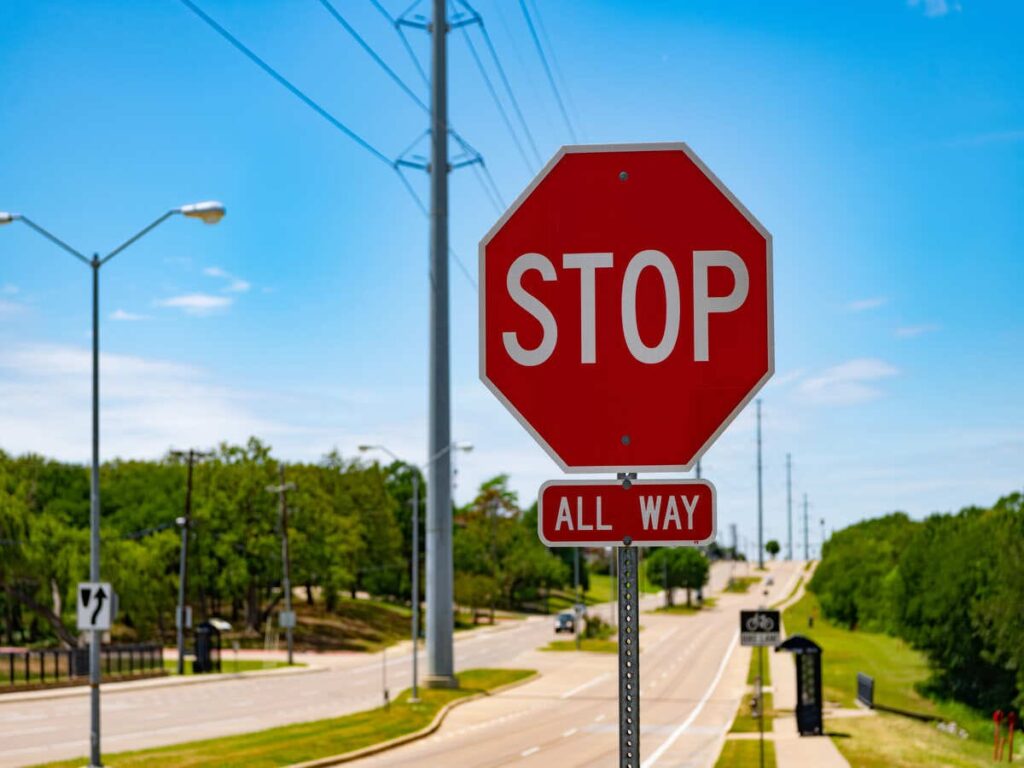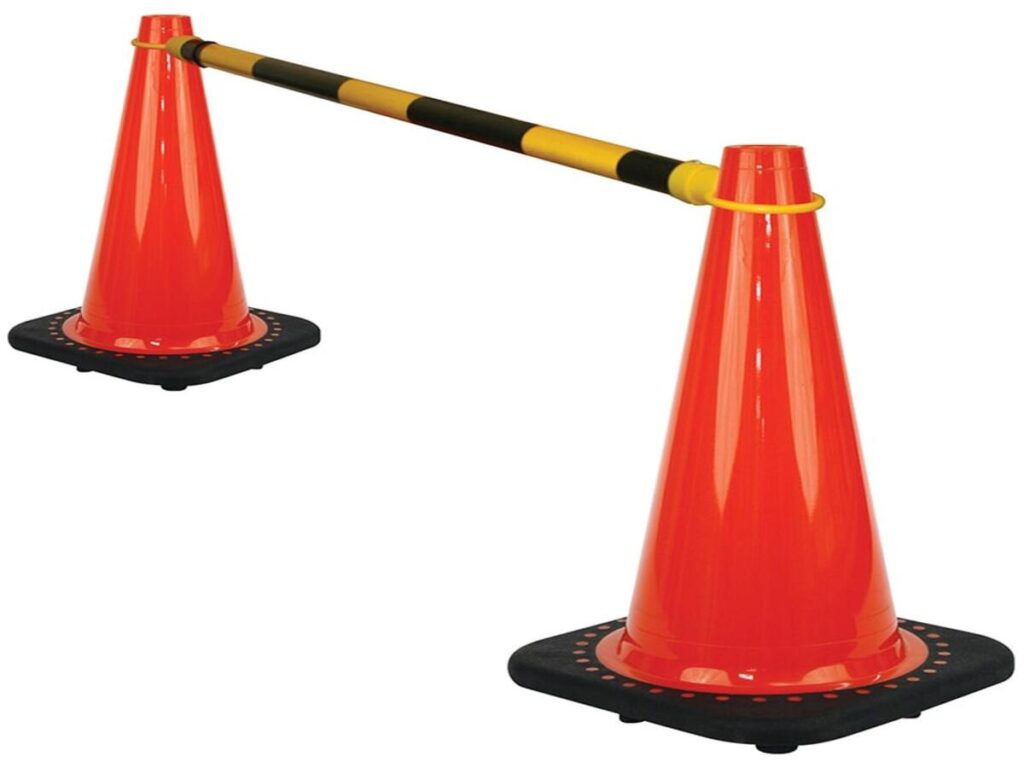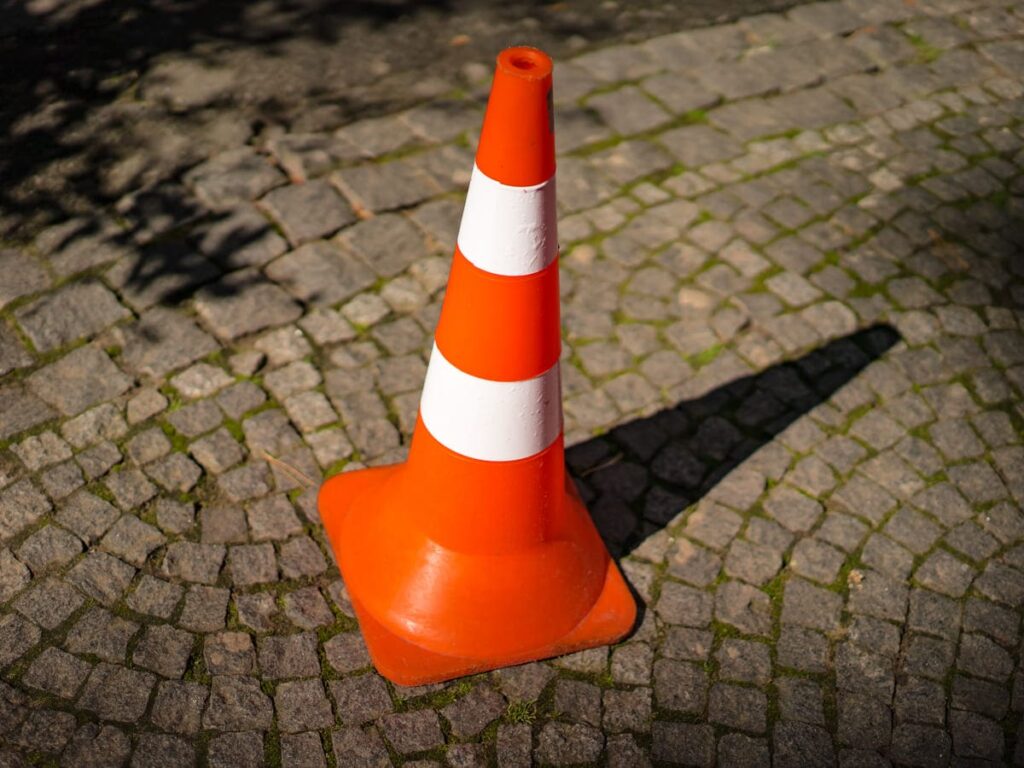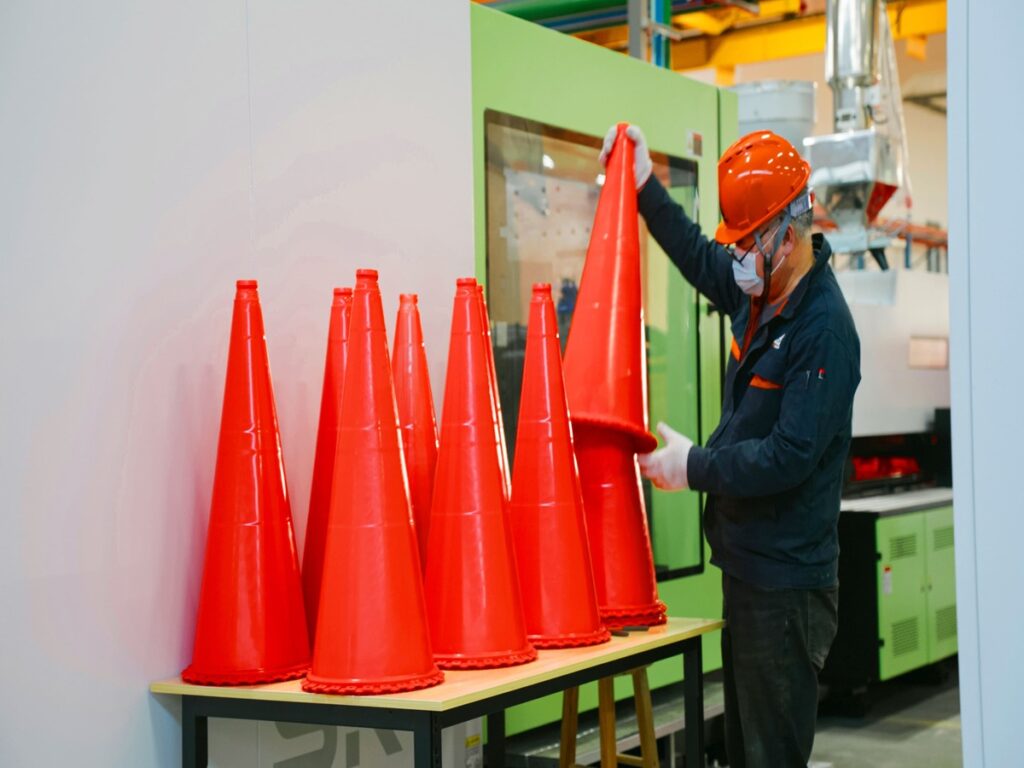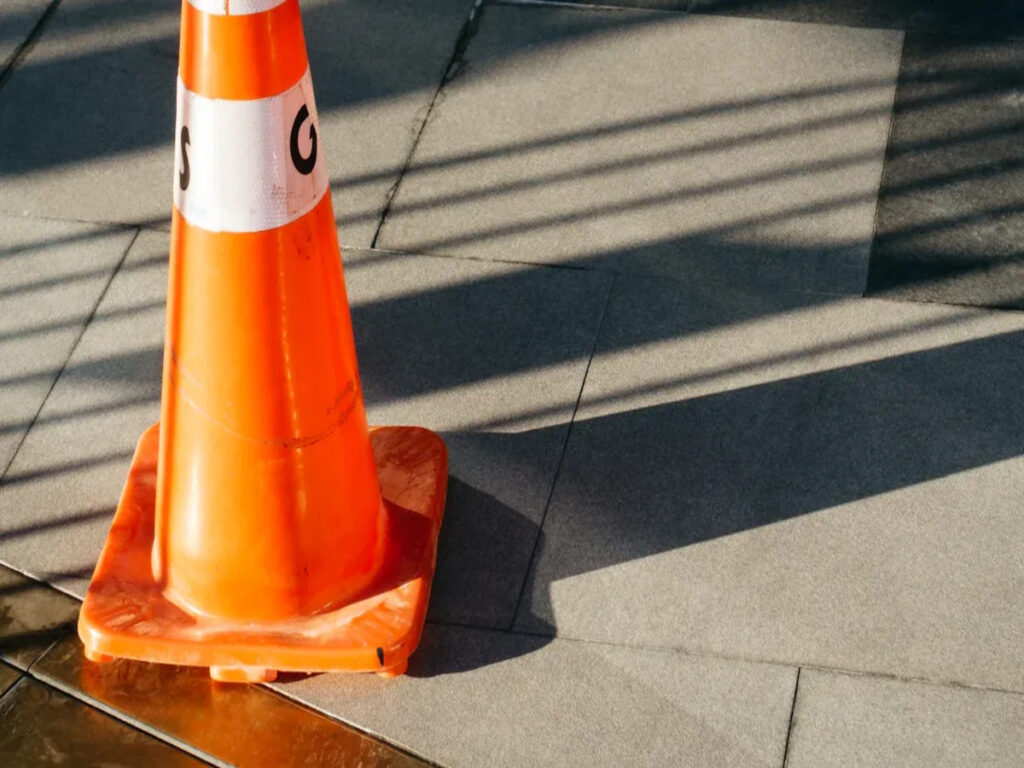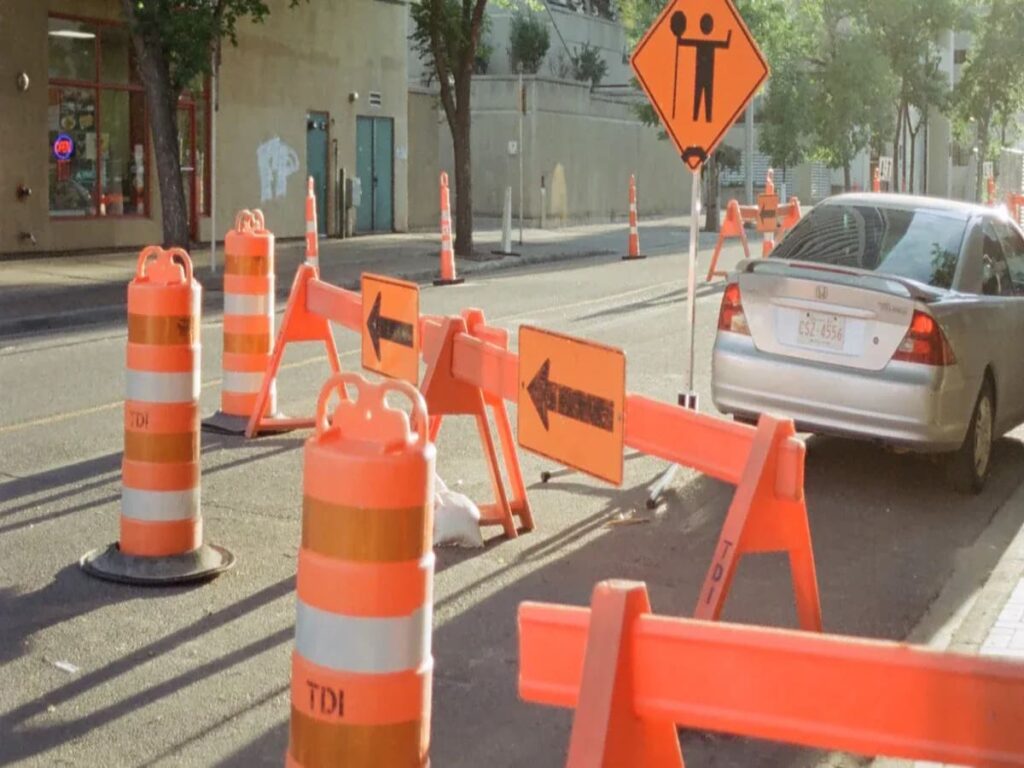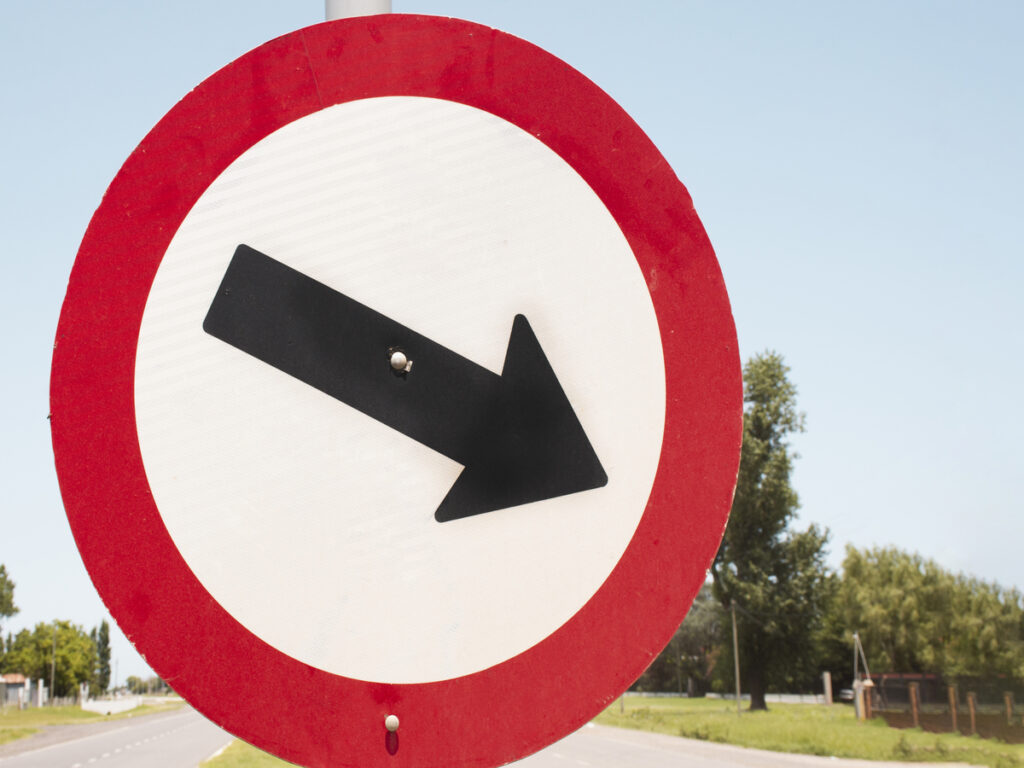
Classe 2 Les feuilles de réflexion donnent une très bonne visibilité sur les routes de trafic moyen et pour les panneaux de route réfléchissants. Sa forte rétroréflectivité aide les conducteurs à voir les signes bien par temps différent, le jour et la nuit.
| Métrique | Classe 1 (RA1) | Classe 2 (RA2) |
|---|---|---|
| Rétro -flectivité (Royaume-Uni moyen) | 29 CD. lx⁻¹.m⁻² | 187 CD. lx⁻¹.m⁻² |
| Taux de détection (Nuit, signifier) | 0.83 | 0.87 |
La recherche montre que l'utilisation de matériaux réfléchissants peut réduire les accidents la nuit 30%. Ces documents suivent également des règles internationales strictes, Ce qui signifie qu'ils sont en sécurité et économisent de l'argent avec le temps.
Pour en savoir plus sur panneau de trafic réfléchissant Normes de feuille en Australie, Consultez notre blog sur Aperçu des normes de feuille de panneaux de trafic réfléchissants en Australie.
Qu'est-ce que la classe 2 Feuille de réflexion?

Définition et normes
Classe 2 Des feuilles de réflexion sont conçues pour aider les gens à mieux voir sur les routes avec une circulation moyenne. Ce matériau utilise une technologie spéciale pour faire rebondir la lumière des phares de voiture aux conducteurs. Cela rend les panneaux de route réfléchis et les marques beaucoup plus faciles à repérer la nuit ou lorsque le temps est mauvais.
Il existe des règles importantes qui disent comment la classe 2 Les feuilles de réflexion doivent être utilisées. Ces règles s'assurent que le matériel est sûr et fonctionne bien.
- ANSI / ISES 107 met la classe 2 Dans un groupe qui a besoin de plus de matériel rétrograde que de classe 1. Cette règle est importante pour les travailleurs proches de la circulation qui se déplace plus rapidement que 25 mph.
- L'OSHA dit que les travailleurs près de la circulation doivent porter des vêtements qui suivent ANSI / ISEA 107 règles.
- Feuille de réflexion de qualité ingénieuse, qui correspond à la classe 2, Rencontre ASTM D4956 Type I et AS / NZS 1906.1 Classe 2 règles.
- Le matériel suit également 12899-1:2007 Type RA1 / Et les règles RA1.
- Certificats d'ASTM, RAPHIA, CE, Et Dot montre cette classe 2 La feuille est de bonne qualité et peut faire confiance.
Ces règles aident à s'assurer que la classe 2 Les feuilles de réflexion donnent la bonne quantité de visibilité et dure assez longtemps pour garder les routes en sécurité.
Caractéristiques clés
Classe 2 Les feuilles de réflexion ont de nombreuses fonctionnalités qui le rendent bon pour les routes de trafic moyen.
- Rétroréflectivité élevée: Le matériau rebondit bien, Ainsi, les signes peuvent être vus de loin.
- Durabilité: Classe 2 La feuille résiste au mauvais temps, soleil, et l'eau, Donc ça dure à l'extérieur pendant des années.
- Versatilité: Les fabricants utilisent différents matériaux comme le PMMA, PVC, et animal de compagnie pour répondre aux différents besoins.
- Conformité: La feuille suit les règles locales et internationales, C'est donc un choix de confiance pour la sécurité routière.
De nombreux conseils locaux choisissent la classe 2 Feuille de panneaux pour les panneaux de route réfléchissants car il n'est pas trop cher et fonctionne bien. Ce matériau aide à garder les conducteurs, cyclistes, Et les gens marchant en sécurité sur les routes.
Caractéristiques clés et performances de la classe 2 Feuille de réflexion
Réflectivité et réflexion de la lumière
Classe 2 La feuille de réflexion utilise une technologie de billes microprismatiques ou de verre spéciale. Cette conception permet au matériau d'envoyer la lumière des phares de voiture aux conducteurs. En raison de sa rétroréflectivité élevée, Les signes peuvent être vus de loin. Les ingénieurs vérifient cela en utilisant Candela par lux par mètre carré (CD. lx⁻¹.m⁻²). Classe 2 Les feuilles ont généralement des valeurs beaucoup plus élevées que la classe 1. Cela signifie que les conducteurs ont plus de temps pour voir les signes et réagir. Il aide à garder les routes à trafic moyen.
Visibilité et performance nocturne
Les conducteurs ont parfois du mal à voir des panneaux de route réfléchissants la nuit ou par mauvais temps. Classe 2 Les feuilles de réflexion aident à ce problème. Le matériau brille brillamment lorsque les phares de voiture l'ont frappé, Les signes sont donc faciles à voir même dans le noir. Ceci est très utile aux passages à niveau, intersections, et les rues animées en banlieue. Une bonne visibilité la nuit abaisse les chances d'accidents. Il aide également les conducteurs à faire de meilleurs choix. De nombreux conseils utilisent une classe 2 feuille où l'éclairage change rapidement.
Conseil: Voir bien les panneaux la nuit peut aider à arrêter les accidents et à rendre les routes plus sûres.
Durabilité et résistance aux intempéries
Classe 2 Les feuilles de réflexion sont faites pour durer à l'extérieur par temps difficile. La série de feuilles préimprimées WR-6100 rencontre une classe européenne stricte 2 Règles de réflectivité et de force. Des produits comme WR-7100M et WR-6100 sont forts contre les rayures et peuvent se plier facilement. Ces fonctionnalités aident la feuille de feuille bien après les bosses ou dans des endroits difficiles. Les feuilles de barricade pré-coupées résistent également au mauvais temps et à une grande utilisation. Ces qualités s'assurent que les panneaux restent clairs et utiles pendant de nombreuses années, Même là où il y a de fortes pluies, soleil chaud, ou beaucoup de bosses.
Applications de la classe 2 Feuille de réflexion sur les routes à trafic moyen
Types de routes appropriés
Classe 2 Les feuilles de réflexion sont les meilleures pour les routes avec un trafic régulier. Les conseils l'utilisent souvent dans les rues suburbaines. Ces rues ont des voitures, cyclistes, Et les gens marchent. La lumière change beaucoup sur ces routes. Des panneaux de route réfléchissants clairs aident à garder tout le monde en sécurité. Les intersections de la ville et de la ville utilisent également la classe 2 tasserie. Les conducteurs doivent voir les panneaux rapidement aux passages chargés. C'est important pendant les heures de pointe ou lorsque le temps est mauvais. Les passages pour piétons doivent être faciles à voir. Cela aide à protéger les gens qui traversent la route. Classe 2 La feuille permet aux conducteurs de voir les traversées de loin, Même la nuit.
Certaines routes près des écoles ou des parcs utilisent cette feuille. Il aide les conducteurs à remarquer les limites de vitesse et les signes d'avertissement. Les routes rurales avec un trafic moyen utilisent également la classe 2 tasserie. Ces routes peuvent ne pas avoir des réverbères. Signes réfléchissants avec classe 2 La feuille aide à assurer la sécurité des gens après la tombée de la nuit. La feuille reste brillant dans toutes sortes de temps. Cela compte pour les routes avec la pluie, brouillard, ou un soleil fort.
Types de signes et emplacements
Classe 2 Les feuilles de réflexion fonctionnent pour de nombreux panneaux routiers. Les panneaux de limite de vitesse l'utilisent pour rappeler aux conducteurs pour ralentir. Des signes d'avertissement pour les virages aiguës ou les passages animaux doivent se démarquer. Ces panneaux de route réfléchis doivent être clairs à la fois jour et nuit. Des panneaux réglementaires comme Stop ou céder les signes doivent être faciles à voir. Cela aide à guider le trafic en toute sécurité.
Les ingénieurs mettent des signes réfléchissants où les conducteurs ont besoin d'informations rapides. Les panneaux aériens sur les routes très fréquentées utilisent la classe 2 tasserie. Cela les maintient visibles de loin. Des panneaux sur le côté gauche ou au bord de la route utilisent également ce matériau. Des études montrent que les feuilles avancées, comme 3M ™ Diamond Grade ™ DG³, peut couper des accidents jusqu'à 46% au fil du temps. Cette technologie reflète plus de lumière. Les panneaux restent brillants même dans des endroits difficiles à voir. Les conducteurs plus anciens et les conducteurs de camions trouvent ces signes plus faciles à repérer. Cela aide à garder tout le monde en sécurité.
La recherche indique que la couleur et le matériau des panneaux de route réfléchissants changent combien de temps ils durent. Les signes bleus durent souvent le plus long. Les signes blancs et rouges peuvent devoir changer plus tôt. Les conseils utilisent ceci pour planifier où mettre des signes et quand les remplacer. En choisissant la classe 2 tasserie, Ils n'ont pas besoin de changer les signes aussi souvent. Cela économise de l'argent et maintient les routes plus sûres plus longtemps.
Note: Mettre les bons signes réfléchissants aux bons endroits peut réduire les accidents et aider le trafic à mieux se déplacer sur les routes de trafic moyen.
Comparaison des cours de feuille de réflexion
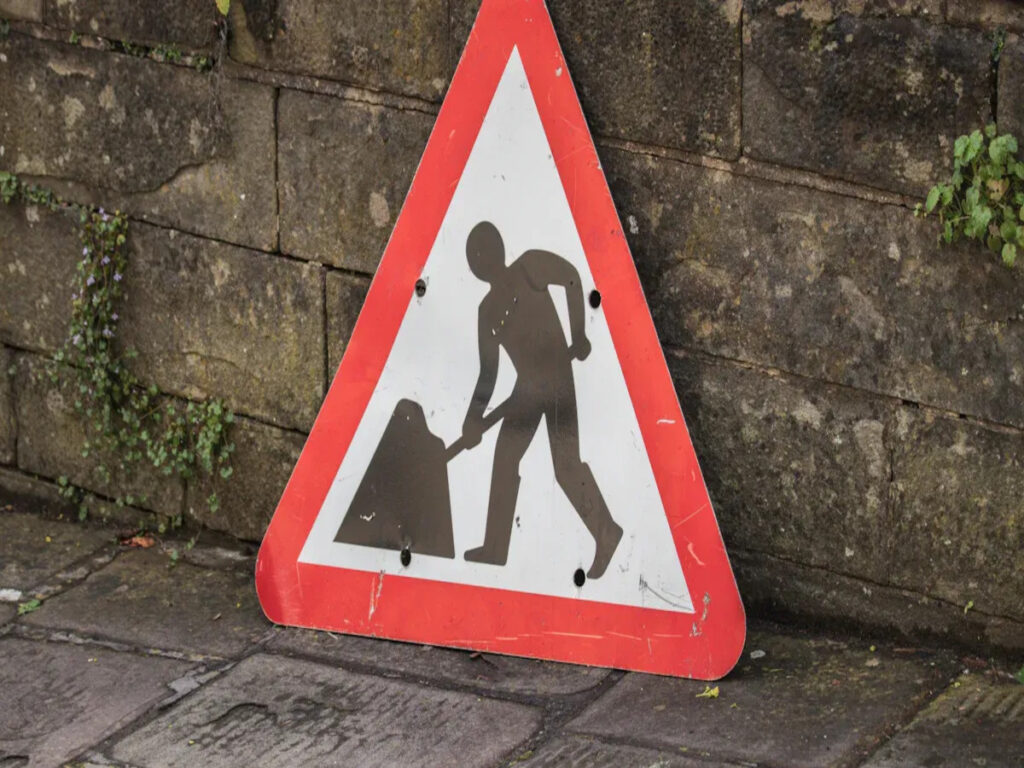
Classe 1 vs classe 2
Classe 1 et classe 2 Les conducteurs de feuille de réflexion aident les signes. Ils sont fabriqués à partir de différents matériaux et ont une luminosité différente. Classe 1 tasserie utilise la technologie des perles de verre. Il donne un niveau de réflectivité de base. Ce type est bon pour les routes avec un trafic lent ou moins de voitures. Classe 2 La feuille utilise une technologie de perles de verre microprismatique ou avancée. C'est beaucoup plus brillant que la classe 1. Les conducteurs peuvent repérer des panneaux avec la classe 2 Feuille de plus loin. Cela fonctionne bien la nuit ou quand le temps est mauvais.
Classe 2 La feuille est également plus forte et dure plus longtemps à l'extérieur. Il ne s'estompe pas rapidement au soleil et ne se fait pas endommager par la pluie ou le vent. Classe 1 Les feuilles peuvent ne pas durer aussi longtemps par temps dur. Les conseils choisissent souvent la classe 2 pour les rues et les intersections animées. Cela aide à garder tout le monde plus en sécurité sur la route.
Note: Classe 2 Les feuilles sont conçues pour être plus brillantes et plus fortes, C'est donc un bon choix pour les routes de trafic moyen.
Coût et performances
Le prix est important lors de la sélection des feuilles de réflexion. Classe 1 La feuille est moins chère que la classe 2. Mais classe 2 fonctionne mieux pour l'argent dépensé. Il est plus brillant et dure plus longtemps. Cela signifie que les conseils n'ont pas à changer de signes aussi souvent. Au fil du temps, Classe 2 La feuille permet d'économiser de l'argent car il a besoin de moins de fixation et de remplacement.
Classe 2 est un choix populaire pour les routes de trafic moyen. Il donne un bon mélange de prix et de performances. Les conseils deviennent brillants, signes difficiles sans payer trop. Classe 2 Les feuilles aident à protéger les routes et à économiser de l'argent.
Normes et conformité
AU et directives internationales
Classe 2 Les feuilles de réflexion doivent suivre des règles strictes pour la sécurité. En Australie, Les normes de panneaux routiers sont régies par AS / NZS 1906.1, qui décrit les exigences des matériaux réfléchissants utilisés sur les panneaux de trafic. Cela garantit que les signes offrent une excellente visibilité, surtout sur les routes de trafic moyen, Dans diverses conditions météorologiques et éclairages.
D'autres pays utilisent des directives similaires pour assurer la sécurité. Au Royaume-Uni, le Département des transports suit la norme européenne DANS 12899-1:2007, qui spécifie comment les signes fixes doivent refléter la lumière. Les États-Unis utilisent ASTM D4956 pour les types et les notes de feuille de réflexion. Ces normes internationales contribuent à garantir que les panneaux de route réfléchis restent visibles et efficaces, Garder les conducteurs, cyclistes, et les piétons en sécurité sur les routes.
Certification et test
Classe de test des fabricants 2 Feuille de réflexion pour montrer qu'il est de bonne qualité. Le matériel répond à de nombreuses normes bien connues:
- ASTM D4956 Type I et EN 12899 RA1 pour les feuilles de réflexion de qualité ingénieuse.
- Les rapports de test du Brésil montrent que le produit est meilleur que les normes locales de grade d'ingénieur et correspond à ASTM D4956 Type I.
- Les études de cas australiennes disent la classe 2 Les bandes réfléchissantes et le vinyle fonctionnent bien pendant plus 15 années, montrant qu'ils durent longtemps.
- La feuille est aussi bonne que les meilleures marques comme 3M 3200 série, Avery T-1500, et oralite.
- L'utilisation en plein air peut durer jusqu'à 7 années, prouvé par les certificats et ce que disent les clients.
- L'adhésif et la construction de perles de verre donnent de solides résultats, soutenu par des tests et une réelle utilisation.
- Sur 15 Des années de vente dans le monde montrent que le fabricant est fiable.
Ces certificats et tests aident les conseils et les experts en sécurité routière à faire confiance à la feuille. Ils savent que cela fonctionnera bien et durera pendant de nombreuses années, Même par temps difficile.
Conseils de sélection
Évaluation des besoins routiers et de la circulation
Les personnes qui prennent des décisions doivent regarder la route et à quel point elle est occupée avant de choisir le cours 2 feuille de réflexion. Routes occupées mais pas bondées, comme ceux en banlieue ou aux intersections, Travaillez mieux avec ce matériel. Les planificateurs devraient voir s'il y a beaucoup de gens qui marchent, vélos à cheval, ou si la lumière change souvent. Les panneaux dans ces endroits doivent être faciles à voir le jour et la nuit.
Une table peut aider à comparer différents types de feuilles. Le tableau ci-dessous montre comment Prismatique à haute intensité (HANCHE) tasserie est utilisé pour différents travaux:
| Type de feuille | Type ASTM D4956 | Niveau de réflectivité | Utilisations idéales |
|---|---|---|---|
| Prismatique à haute intensité (HANCHE) | Type III, Iv | Moyen-élevé | Convient pour les routes à faible circulation, Signes d'arrêt, Signes de limite de vitesse, et d'autres signes réglementaires. |
Classe 2 La feuille de hanche suit les règles ASTM D4956 Type III ou IV. Cela signifie qu'il brille avec une luminosité moyenne-élevée. Les conseils l'utilisent beaucoup pour des panneaux importants sur les routes avec un peu de trafic. Lorsque les planificateurs choisissent la bonne feuille pour chaque route, Ils aident à garder tout le monde en sécurité.
Conseil: Choisissez toujours la bonne réflectivité pour la vitesse et le nombre de voitures pour la meilleure sécurité.
Assurer la longévité
Combien de temps les panneaux de routes réfléchissants sont importants pour la sécurité et l'économie d'argent. Classe 2 Les feuilles de réflexion se font bien sous la pluie, soleil, et utilisation quotidienne. Les planificateurs doivent choisir des produits qui bloquent les rayons UV et empêcher l'eau de sortir. Les panneaux dans les lieux ouverts ont besoin de plus de protection contre le soleil et la météo.
La vérification des panneaux les aide souvent à rester lumineux et faciles à lire. Les conseils devraient nettoyer les signes et les réparer rapidement s'ils se brisent. Utilisation de la feuille qui répond aux règles difficiles, comme ASTM D4956, aide les panneaux durer plus longtemps et rester brillant. Cela signifie que les signes n'ont pas besoin d'être modifiés aussi souvent et d'économiser de l'argent au fil du temps.
Note: Choisir de bonnes feuilles et s'en occuper aide à garder les routes en sécurité pour tout le monde.
Installation et maintenance
Meilleures pratiques
ÉTENTION DE LA CLASSE 2 Les feuilles de réflexion dans le bon sens le font durer plus longtemps et assure la sécurité des routes. Les travailleurs doivent nettoyer et sécher l'endroit avant de coller sur la feuille. S'il y a de la saleté ou de l'eau, La partie collante ne se tiendra pas bien et le panneau ne durera pas aussi longtemps. Marquer où mettre le panneau aide les conducteurs à le voir mieux et à garder les routes plus sûres.
Les fabricants donnent des instructions étape par étape pour utiliser l'adhésif. Les installateurs doivent suivre ces étapes et laisser la colle définir tout le chemin. S'ils sautent ça, Les feuilles peuvent se décoller ou ne pas briller autant. Le temps et la température sont également importants. Les installateurs doivent choisir la meilleure colle pour la surface de la route. Les résines époxy sont bonnes pour l'asphalte, et les tampons butyle sont meilleurs pour le béton. Il est préférable d'installer des panneaux lorsque le temps est sec et pas trop chaud ou froid.
Les rapports montrent que faire toutes ces choses fait la classe 2 Les feuilles durent plus longtemps et restent brillantes. Les conseils qui utilisent ces conseils ont moins de signes cassés et des panneaux durent plus longtemps.
La vérification des panneaux les maintient souvent bien. Le code IRC 67 dit de vérifier et de nettoyer les panneaux deux fois par an. Les inspecteurs recherchent des signes qui sont fanés, peeling, ou difficile à lire. Si un panneau a l'un de ces problèmes, il doit être changé tout de suite. Les poteaux et les montures ont également besoin de s'occuper. Les nettoyer et les peindre tous les deux ans aident les panneaux à rester solides et faciles à voir.
Conseil: S'occuper des panneaux de route réfléchissants économiser de l'argent et aide à garder tout le monde en sécurité sur la route.
Pièges communs
Certaines erreurs peuvent rendre la classe 2 les feuilles réfléchissantes ne durent pas aussi longtemps. Poser une bâche sur un endroit humide ou sale est une erreur courante. Cela affaiblit la partie collante et le panneau peut tomber prématurément.. Ne pas suivre les étapes du fabricant pour la colle ou ne pas la laisser durcir peut faire peler la feuille ou ne pas bien briller..
La météo est importante. Poser des panneaux sous la pluie, très chaud, ou un temps très froid peut empêcher la colle de fonctionner. Ne pas vérifier les panneaux aggrave souvent les petits problèmes. Les panneaux décolorés ou brisés risquent de ne pas être réparés., ce qui peut être dangereux pour les personnes sur la route.
Un tableau ci-dessous montre les erreurs courantes et ce qui se passe:
| Piège | Effet sur les feuilles |
|---|---|
| Surface mouillée ou sale | Bâton faible, le signe échoue tôt |
| Mauvaise colle ou ne pas la laisser prendre | Peeling, moins de luminosité |
| Je ne pense pas à la météo | Le signe ne dure pas aussi longtemps |
| Ne pas vérifier les panneaux | Dégâts manqués, pas en sécurité |
Note: Faire le travail soigneusement et vérifier les panneaux aide souvent à arrêter ces problèmes et à bien fonctionner les panneaux.
Études de cas
Exemples urbains
De nombreux conseils municipaux australiens utilisent une classe 2 Feuille de réflexion sur les routes très fréquentées. Dans un centre-ville australien, Les ingénieurs ont installé de nouveaux panneaux en classe 2 matériel. Ces signes ont remplacé les anciens qui étaient difficiles à voir. Les conducteurs pouvaient repérer les nouveaux panneaux de plus loin, Même sous la pluie ou le brouillard. La police locale a signalé moins d'accidents la nuit après la mise à niveau. Les piétons se sont sentis plus en sécurité aux passages à niveau parce que les panneaux étaient plus lumineux sous les lampadaires.
Une étude à Melbourne a révélé que la classe 2 feuille de feu 40% plus facile à voir que les matériaux plus anciens. Les chauffeurs de bus ont noté qu'ils pouvaient lire les limites de vitesse et les avertissements plus tôt, ce qui les a aidés à ralentir dans le temps. Le conseil municipal a économisé de l'argent parce que les panneaux ont duré plus longtemps et ont nécessité moins d'entretien.
Note: Des signes clairs dans les villes aident les conducteurs et les gens à marcher. Une bonne visibilité rend les routes plus sûres pour tout le monde.
Résultats de la banlieue
Les routes de banlieue se tournent souvent et ont une lumière différente pendant la journée. Dans une banlieue, Le Conseil a mis en place de nouveaux panneaux avec la classe 2 Feuilles près des écoles et des parcs. Les parents se sentaient mieux de laisser les enfants se rendre à l'école. Les conducteurs ont ralenti davantage aux passages à niveau parce que les signes étaient faciles à voir, Même quand il faisait noir.
Un tableau ci-dessous montre ce qui s'est passé dans un test de banlieue:
| Emplacement | Taux d'accident avant | Taux d'accident après |
|---|---|---|
| Zone scolaire | 5 par année | 2 par année |
| Entrée du parc | 3 par année | 1 par année |
La baisse des accidents montre que de meilleurs signes aident vraiment. Les conseils ont également vu que les panneaux sont restés brillants après de fortes pluies et un fort soleil.
Conseil: Les conseils peuvent rendre les routes plus sûres et économiser de l'argent en choisissant la bonne feuille de réflexion.
Classe 2 Les feuilles de réflexion sont faciles à voir et durent longtemps. Il suit des règles importantes pour les routes à trafic moyen. Les conseils et les planificateurs aiment ceci parce qu'il permet d'économiser sur les panneaux de signalisation. Choisir la bonne feuille aide à assurer la sécurité des gens et ne coûte pas trop.
- Regardez ce dont la route a besoin et utilisez les bonnes normes.
- Vérifiez souvent les panneaux pour vous assurer qu'ils restent brillants et en sécurité.
Conseil: Si un projet routier est délicat, Demandez de l'aide aux experts en sécurité routière.
FAQ
Quelle est l'utilisation principale de la classe 2 feuille de réflexion?
Classe 2 Les feuilles de réflexion aident les conducteurs à voir clairement les panneaux de signalisation sur les routes de trafic moyen. Les conseils l'utilisent souvent pour les limites de vitesse, avertissements, et les passages à piétons. Le matériau améliore la sécurité, surtout la nuit ou par mauvais temps.
Combien de temps la classe 2 Feuilles de réflexion dernier à l'extérieur?
Le plus de classe 2 Les feuilles de réflexion durent jusqu'à 7 ans à l'extérieur. Le matériau résiste à la pluie, soleil, et la saleté. Le nettoyage et les contrôles réguliers aident les panneaux à rester brillants et faciles à lire.
CLASSE CAN 2 Feuille de feuille sur tous les types de routes?
Classe 2 La feuille fonctionne mieux dans les rues suburbaines, intersections, et les routes avec un trafic régulier. Il peut ne pas convenir à des autoroutes ou à des endroits très occupés avec un trafic de camion lourd. Les planificateurs choisissent la bonne classe pour chaque route.
Comment les conseils devraient-ils maintenir des signes avec la classe 2 tasserie?
Les conseils doivent nettoyer les panneaux deux fois par an et vérifier la décoloration ou les dommages. Les réparations rapides gardent les panneaux visibles et en sécurité. Les soins réguliers aident les panneaux à durer plus longtemps et à économiser de l'argent.

